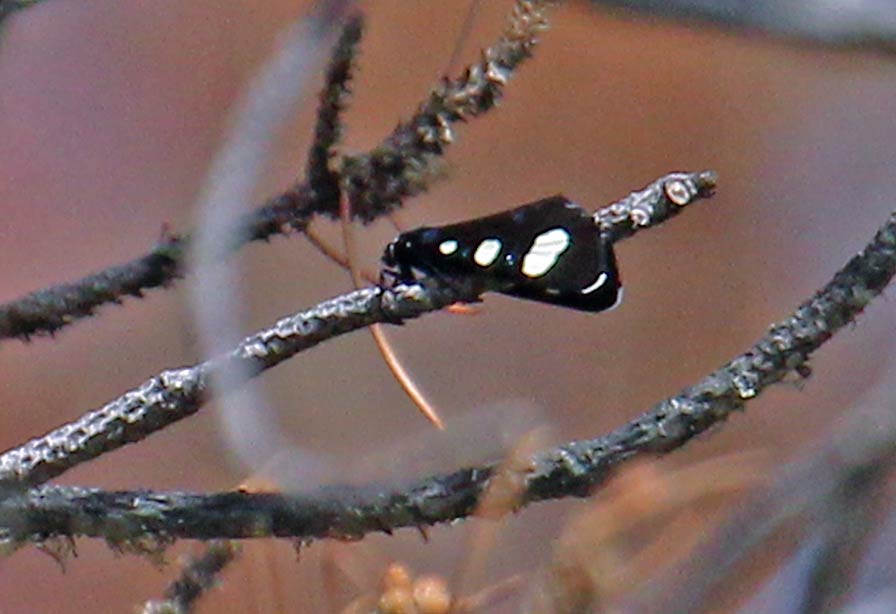
This moth is presumeably Alypiodes bimaculata
Two-spotted Forester - it was
spotted by Sheridan Coffey hanging in some flowers along a stream
in the Davis Mountains Resort (a private community) near Fort
Davis, Jeff Davis county Texas on August 17, 2008. It was not
moving so I took a closer look and found that it was hanging in
the jaws of a small spider; I robbed him of his meal and laid out
the moth for photos (and kept the specimen). While a fairly good
fit for A. bimaculata it differs from the 5 individuals
I could find images of on the internet:- the basal white spot on
each FW is a block rather than a thin triangle plus there is an
additinal large mauve-blue spot basal to it; also there is an
extra blue spot on the inner part of the FW:
Update August 21, 2012: On
August 18, 2012 we were hiking in the Nature Conservancy's Davis
Mountains Preserve and saw at least 8 individuals that matched Two-spotted
Forester; here is a distant photo of one perched
high-up in a conifer. Note that it too has the block-shaped or
circular (rather than triangular) basal pale spot plus extra blue
markings as per the individual above - and unlike photos of this
taxon from further west - ?:
